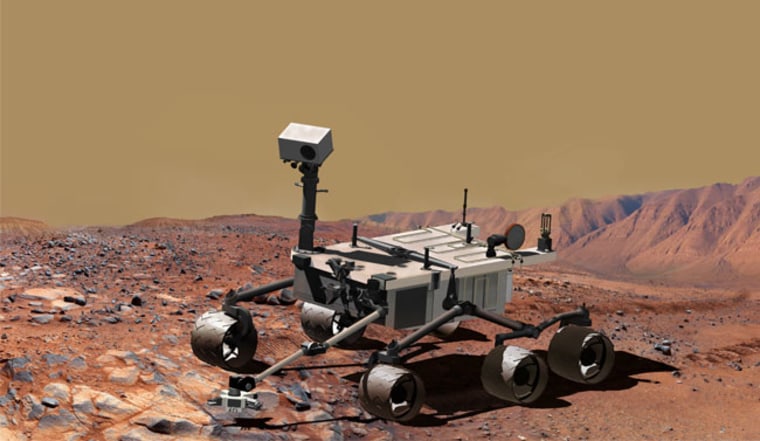The Mars Science Laboratory mission, a jumbo rover originally slated to launch for the Red Planet next year, has been delayed until 2011, NASA announced Thursday.
"We will not be ready to launch by the hoped-for date next year,"NASA Administrator Michael Griffin said at a briefing.
A major review of the mission, conducted earlier this year, had concluded that Mars Science Laboratory, or MSL, "had a solid chance of making the 2009 launch" if the launch window was extended into October 2009, said Ed Weiler, associate administrator for NASA's Science Mission Directorate at NASA Headquarters in Washington. That extension was approved, and an additional $200 million was added to the project, he said.
But new technical issues that came up since that review, as well as missed delivery schedules, have prompted NASA officials to delay the mission further to avoid a "mad dash to launch," Weiler said. "Failure on this mission is not an option, the science is too important," he added.
The MSL rover has a complex suite of instruments that can test the Martian surface for signs of past potential habitability, including onboard chemistry labs and a laser that can zap rocks to determine their composition.
The rover may leave some of its originally planned equipment behind as a result of mission revisions.
The rover is much larger than its Mars Exploration Rover cousins, Spirit and Opportunity, which weigh in at about 2,040 pounds (925 kilograms) and are currently still operating on Mars. MSL will also use a completely novel way of getting down to its landing site, called Sky Crane, which will have cords that attach it to the lander. The Sky Crane's thrusters should slow the rover's descent while the crane uses the cords to lower the lander.
The mission now is delayed for two years, because the relative positions of Mars and Earth limit the number of efficient launch opportunities.
"We're really only a few months behind schedule, not two years behind schedule," said Doug McCuistion, director of the Mars Exploration Program at NASA Headquarters.
Landing sites for the mission, which were recently whittled down to a final four, will likely be unaffected by the delay, McCuistion said.
The delay will add an estimated $400 million to the mission, which could impact other NASA programs, McCuistion said. NASA will aim to delay programs rather than cutting any, officials said at Thursday's briefing.
The particular technical issues delaying the mission are with the rover's actuators, which McCuistion describes as a combination of a motor and a gear box. The actuators control anything in the rover that moves, including the wheels and robotic arms.
"They're absolutely crucial to the success of this mission," McCuistion said. Without them "we'd basically have a metric ton of junk on the surface" of Mars, he added.
Most of the rover's hardware has been completed, and the two years until launch will be spent dealing with the actuators and any other technical issues that crop up.
"It's not like it's going in a big plastic bag and sitting in the corner for two years," McCuistion said.
Griffin said he had "full confidence in the JPL [Jet Propulsion Laboratory] team to work through the difficulties."
More on |
